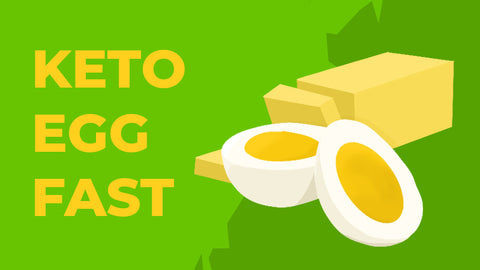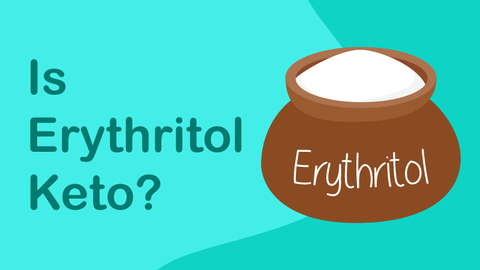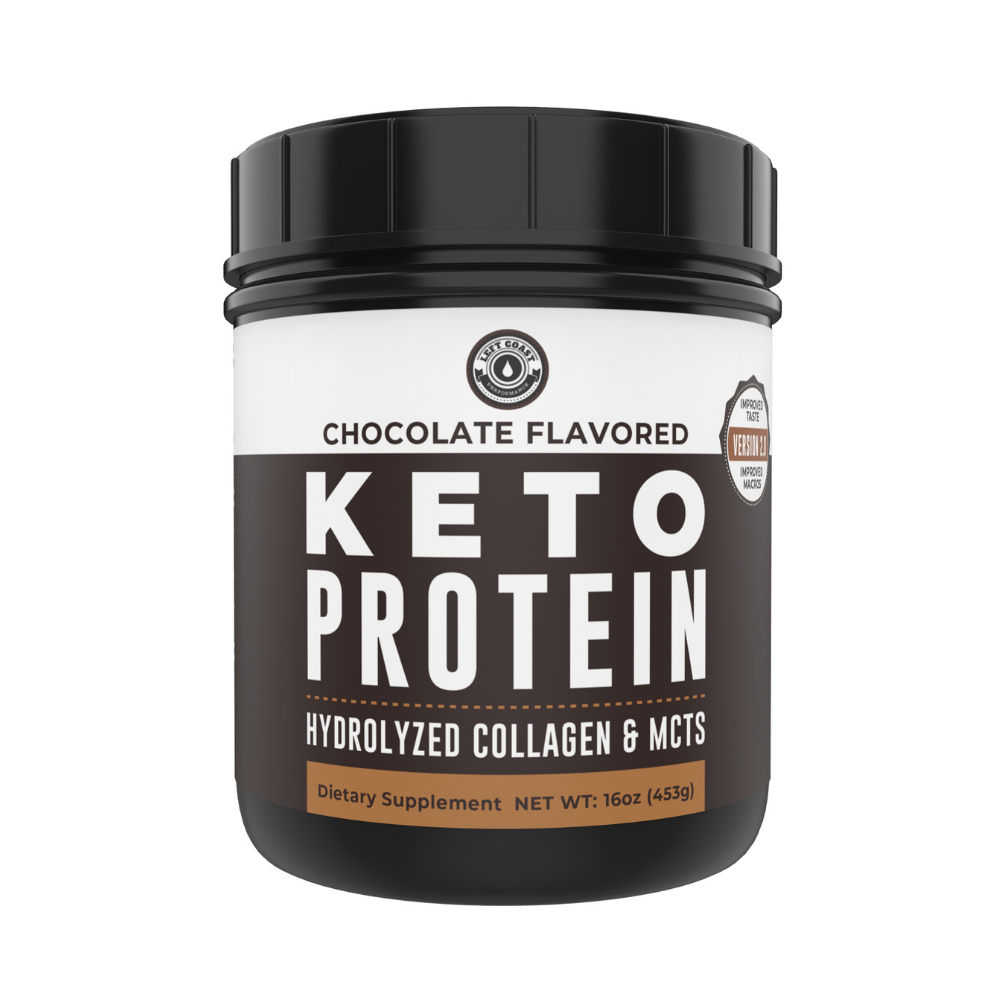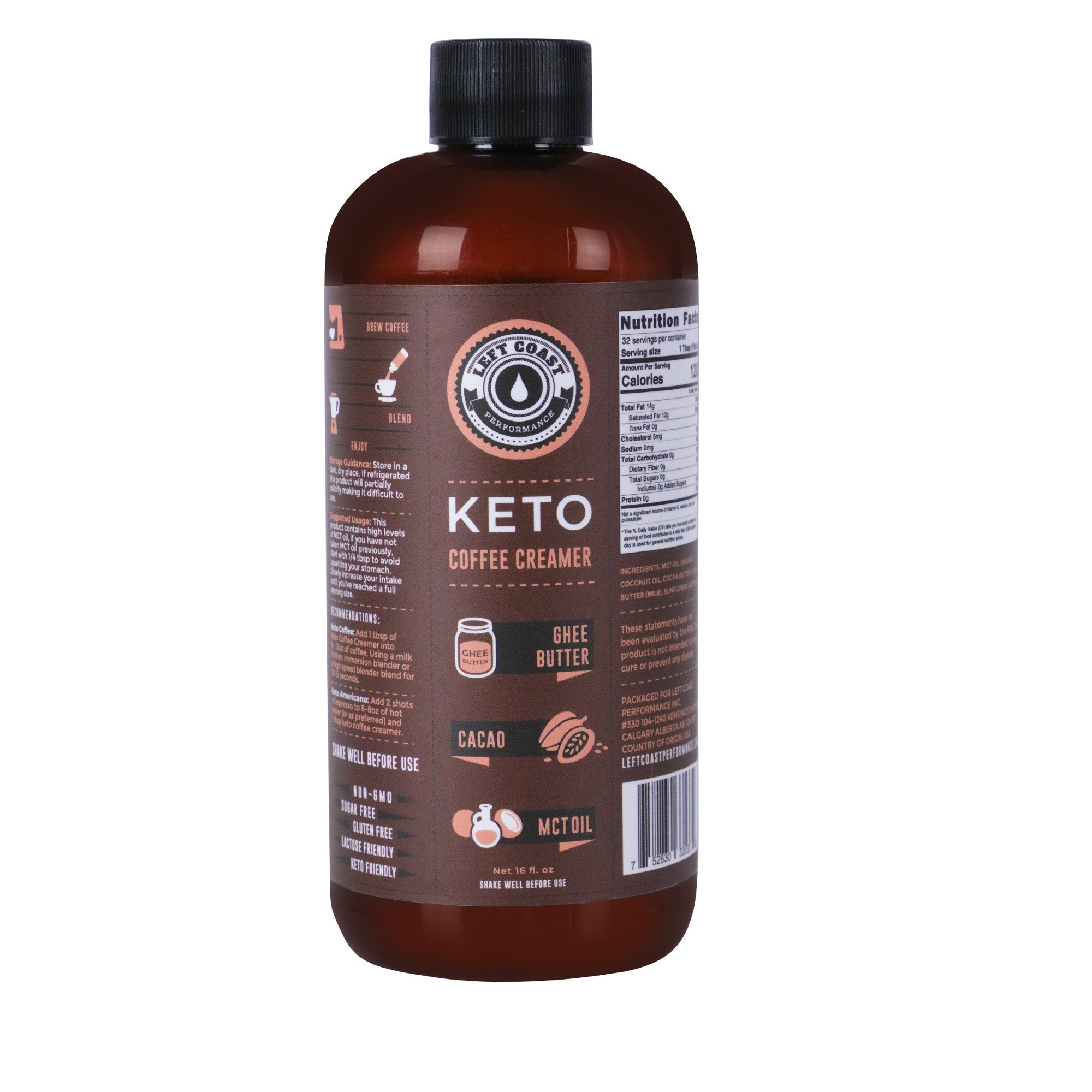Crafting A Great Keto Diet Plan: Do's and Don't's

on October 01, 2019
Considering a ketogenic diet? The keto lifestyle is booming in popularity thanks to celebrity endorsements, an increase in research, and results that seem too good to be true. However, between the highly-visible endpoints of the diet, there exists a tightrope walk of sorts. A thin line of self-discipline is the only thing that separates other fad diet failures and happy, healthy living.
For the majority of people following the ketogenic diet, a diligent diet plan is key to mastering this tightrope walk. With this guide, you can start your own keto journey and stay focused enough to reach your goals, all while avoiding common diet pitfalls along the way.
Principles for Creating a Keto Diet Plan
The keto diet is a lifestyle that’s surrounded by enthusiasm, which makes beginners want to jump right in. However, there are a few boxes you need to check right from the start.
Set a Goal
No matter if you have short or long-term plans for the keto lifestyle, goal setting helps fuel your inner fire — and you’ll need that fire to get you through the tough times.
The metabolic goal of keto is the same for everyone — a process called ketosis. It’s defined as the transition of your body’s energy source from blood sugar to stored fat.
However, it’s better to think of ketosis as a tool. Once your body switches to ketosis, what will it help you accomplish and how will you enable yourself to get there?
Get Checked Out
Because of the restrictive nature of the keto diet, it is highly recommended to discuss your dietary plans with your doctor. Though a keto diet is safe and effective for the majority of the population, there are still a few cases where keto may not be the right choice.
Folks who are prone to nutrient deficiencies, those with kidney or liver problems, and pregnant or nursing women may want to consider alternatives to the keto diet.
Educate Yourself
The keto diet is experiencing a renaissance, thanks in large part to the Internet. For this reason and many others, it’s important to educate yourself on the keto diet before getting started.
Unfortunately, there is a lot of misinformation that surrounds keto. The lifestyle garners both undue praise and unfair criticism, neither of which is helpful for rational fact-seekers. Until you do your own research using trusted sources, the best advice is to take everything you read with a grain of salt.
Creating Your Plan
It’s time to break down the day-to-day keto experience. In this section, you’ll find everything you need to know about calculating your macronutrients, finding keto recipes, and putting together a keto-friendly grocery list.
Know Your Macros
The first step to any keto diet plan is to know your macros. Macros, or macronutrients, are the nutrients in food that give you energy. They come in three forms: fats, proteins, and carbohydrates.
In order for your body to enter ketosis, specific limits must be set for the amounts of each macro you eat per day. This is where a keto calculator is very helpful. It can help you fine-tune your macro levels to help your body enter ketosis faster, which helps you get results faster, too.
Hunting for Recipes
After calculating your macros, it’s time to dive into the wide world of keto recipes. There are thousands upon thousands of keto recipes out there — main courses, appetizers, desserts, snacks, you name it.
Explore recipes with your favorite keto ingredients or search based on your level of cooking expertise. Meal prep recipes are great for cooking once and having ready-made meals when you need them.
Because the keto community is very aware of their macro needs, many keto recipes go into great detail about the number of calories, carbs, fats, and proteins that the dish contains. However, if for some reason this information is left out, it’s easy to use a food tracker app like MyFitnessPal to estimate how a meal will impact your daily values.
Keto Grocery List
Once you have researched a few recipes and know what you’ll be cooking, it’s time to hit the grocery store. Even if they’re not on your list, you may want to pick up some of these keto essentials to have on hand for when the hunger pangs start:
Meats
- Beef Jerky
- Ground Beef
- Chicken Breasts
- Eggs
Dairy
- Full-fat greek yogurt
- String cheese
- Heavy cream
- Full-fat cottage cheese
Non-starchy Vegetables
- Asparagus
- Tomatoes
- Cucumber
- Bell pepper
- Broccoli
- Cauliflower
- Salad greens
Miscellaneous
- Coconut oil
- Coconut milk
- Mixed nuts
- Stevia sweetener
- Cocoa powder
Adding Exercise
Exercise is a key component to any healthy diet, but for keto, it’s especially important. Exercising helps you build up a caloric deficit, allowing you to burn off more calories and help your body enter ketosis faster. Exercise can also help keep your muscles in top form while eating a moderate amount of protein.
During the first week of your keto journey, you may not feel up to exercising thanks to the keto flu. This is because your body is adjusting to new processes. If you exercise too much during this delicate time period, you may experience light-headedness or feel dizzy, which can lead to injury.
Once you get your keto legs and your body starts to normalize the new process of ketosis, it’s safe to add exercise back into your routine. Just be sure to track your activity levels and increase your calorie intake accordingly.
Tracking Your Keto Sucess
Once your keto journey begins, the tracking process begins as well. Ketosis requires continual monitoring and personalization in order to sustain. Fortunately, there are several tools that make this as easy as possible.
Ketone Testing
Ketones are the energy molecules created when the body switches into ketosis. As the body switches energy sources, more and more ketones will be found in the blood and urine.
Ketone testing strips, available online, are the only sure-fire way to tell if someone is in ketosis or not. These strips also come in handy if you are having trouble reaching ketosis. By testing ketone levels daily, you can make small adjustments to troubleshoot the keto diet and personalize a solution that works for you.
Tracking Weight Loss
There are many ways to track your weight loss journey on keto. Many people suggest taking before and after pictures because the results can often be dramatic. Others suggest keeping a weight loss journal that lets you see short term and long term fluctuations in weight loss patterns. No matter how you decide to track your progress, it’s an important measurement that can help you stay motivated.
What to Avoid When Creating a Keto Diet Plan
Cheat Days
Many popular diets allow dieters to “cheat” and eat whatever they want for a small window of time. Unfortunately, the keto lifestyle has zero tolerance for cheating. Keto is built upon the physiological mechanism of ketosis.
Because the transition to ketosis is hinged on a fine line of carbohydrate limitation, one slip up can knock you out of the metabolic state entirely. This can render the diet completely ineffective and you will have to start over from square one.
Looking for the silver lining? The restrictiveness of the keto diet forces you to get creative with your cooking and meal planning. Carb-heavy tortilla chips get replaced with crisp bell peppers to form keto-friendly nachos. New flavor combinations like coconut, chocolate, and peanut butter come together in ways you may have never known without the keto diet.
So when you’re feeling uninspired and craving carbs, add some variety with a recipe or ingredient that you’ve never used before. Keto makes it possible to look beyond the carbs you’re missing and focus on your end goals — without cheating.
The Dirty Keto Conundrum
The keto lifestyle is not a free pass to eat whatever you want as long as it technically follows the rules.
An entire subculture of “dirty keto” has developed which has followers eat keto-variations of their favorite junk foods. The practice of peeling hamburger buns off big macs and asking for extra bacon on top of everything decries the core keto principles of balance, health, and sustainability.
While fast food may be your only option at some point, it’s important to understand that keto works best when you make the effort to prepare your own meals and track what you’re putting in your body.
How to Stave Off the Keto Flu
The first test of any keto diet plan is the Keto Flu. A well-known hurdle in the keto world, the keto flu is a collection of flu-like symptoms that occur as your body transitions into ketosis. These symptoms may include lack of appetite, headaches, nausea, constipation, and fatigue.
While some of the symptoms of the keto flu are unavoidable, there are a few things you can do to shorten the length of time you experience them.
- Drink plenty of water
- Replenish electrolytes
- Get a good night’s sleep
- Make sure you’re eating enough
- Avoid overdoing it on exercise
Symptoms of the keto flu should only last a week or so at most. If you experience symptoms that last longer, consult your doctor.
In Conclusion
A well-thought-out keto diet plan is the key to finding success on your keto journey. By understanding the process, setting a goal, and planning a route to success, many people are able to surpass their targets for both weight loss and wellness.
Holding yourself accountable is at the heart of the keto movement. By exemplifying true self-discipline, the lifestyle shows people the way to happier and healthier lives.














